
Individuals
We've seen that a fair portion of the Fowler's collection is from large donations. However, a substantial amount of its art is from modern individual artists.
With mass donations such as the Wellcome Trust, we lose a lot of information about each piece. Henry Wellcome, for example, took thousands of excavated vessels from Peru in a period when archaeology was less focused on studying the culture and more focused on taking a region's treasures. Wellcome's artifacts sat in large warehouses in Europe until his death. Because of this, we lose a lot of story for each artifact.
However when a donation with an attributed artist gets to the Fowler, we are able to attach a story to the artwork. Below are some examples of powerful stories accomponing their works:
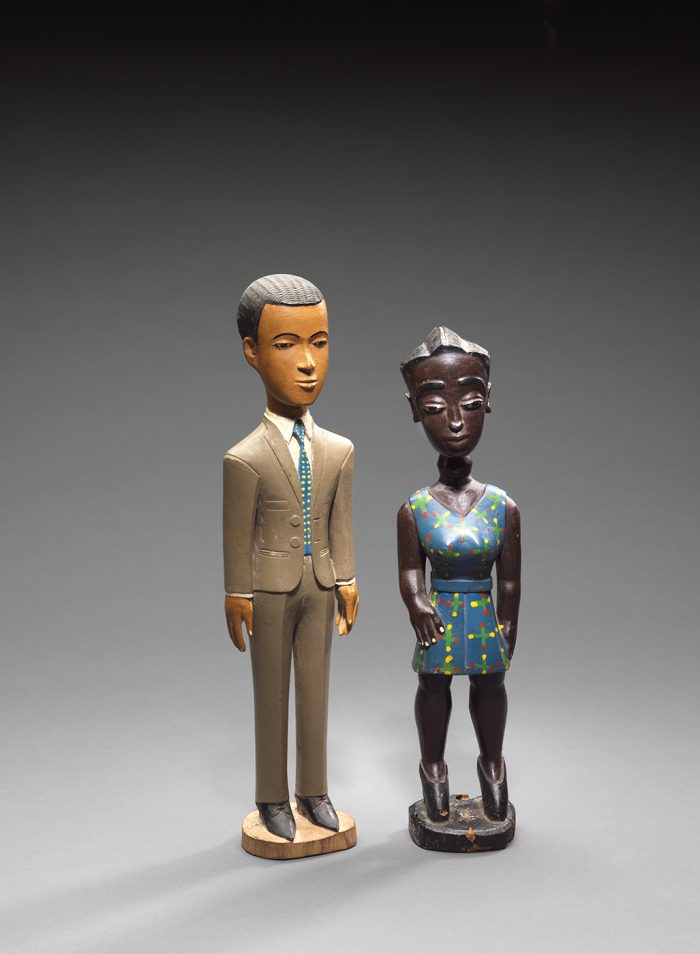 | "Each of these figures was created at the recommendation of a diviner to represent the “otherworld mate” of a Baule man or woman. Offerings made to the figure would help resolve problems relating to marriage, sexuality, or fertility. These figures are not a pair and were carved separately in response to the needs of two different people." |
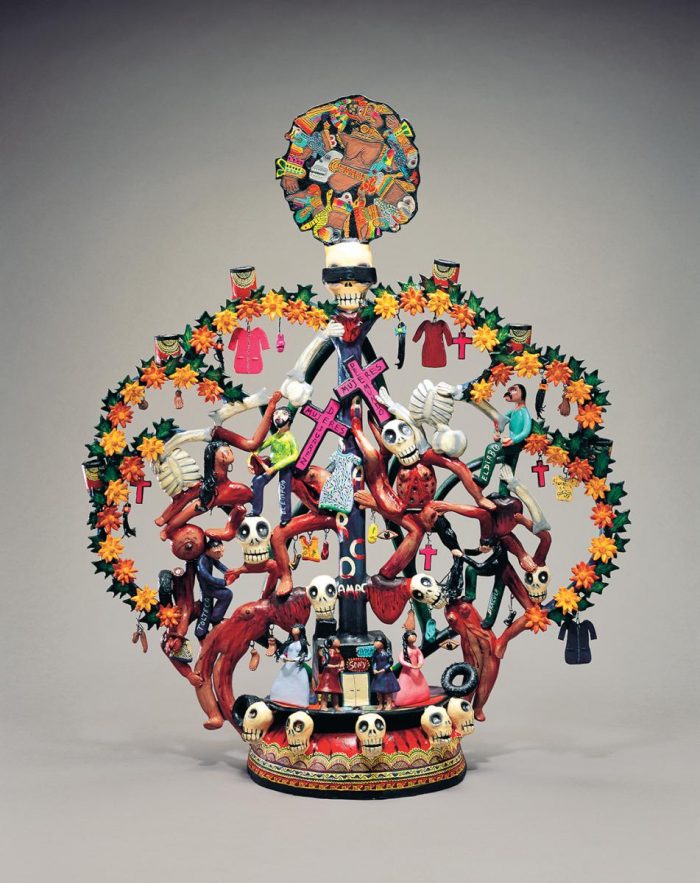 | "The ceramic Tree of Life is a Mexican popular art tradition and embodies centuries of accumulated symbolism. Trees using death imagery may be placed on Day of the Dead altars to memorialize loved ones. In Tree of Death: Factory Women, Veronica Castillo Hernández creates a visual elegy for more than 400 young women and girls who have been brutally murdered since 1993 in Cuidad Juárez on the Mexican border near El Paso, Texas. Sadly, U.S. and foreign-owned border factories and the press have done little to investigate these crimes, and today the murders continue and remain unsolved. Castillo Hernández’s compelling work is a poignant reminder of the violence that has devastated a community and a moving tribute to the innocent victims of these heinous crimes. It also demonstrates the power of popular art to expand beyond its traditional meaning and to bring public attention to this tragedy." |
"Eloi Lokossou is a prolific Yoruba artist who creates works for one of two Gelede dance societies in the south central Benin Republic. The proud young man portrayed riding a Honda motorcycle makes a statement about wealth, status, and modernity. At a deeper level, the mask refers to Ogun, the Yoruba god of iron-and hence devices like motorcycles made from metal and associated with the violence of change. Further allusion is made to the mystical powers of 'our mothers', as depicted in the placid face of a woman in the mask's lower register, for they mystically assure innovation as eye-catching as this shiny new motorcycle." | 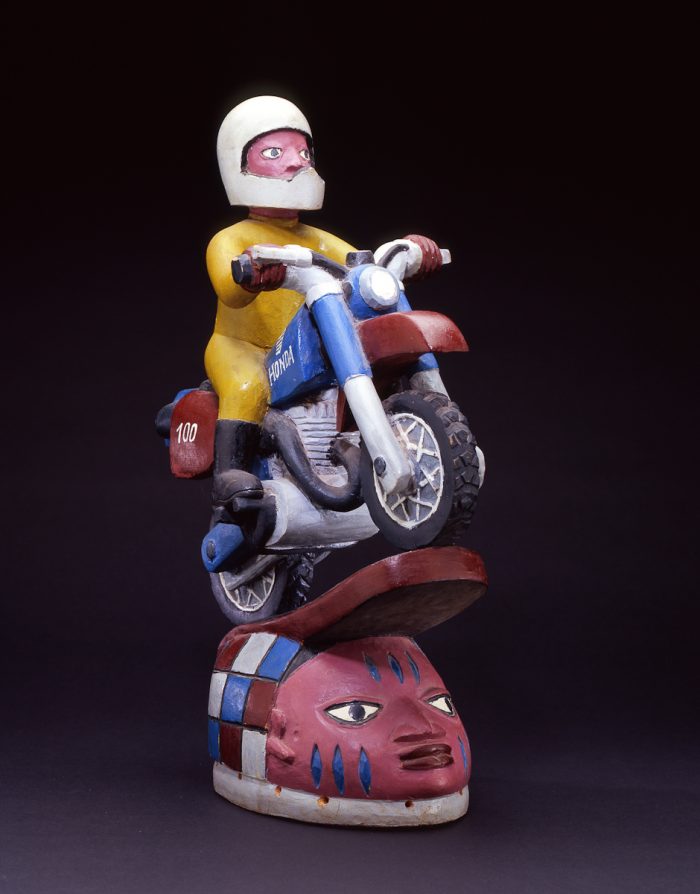 X2006.5.1 Gelede Mask |
X77.1391a-d Hand puppet, the Blind Scholar | "The name of this hand puppet, a schoolteacher known as the Blind Scholar, is written on his face, together with a passage from the Book of Three Character Phrases, a textbook used by schoolchildren in prerevolutionary China. This schoolteacher imparted the importance of learning and literacy as he entertained Chinese audiences." |
| "Johannes Segogela uses the metaphor of death to make a powerful statement about social and political transformation in South Africa with the dissolution of the apartheid regime. This particular sculptural installation was carved in anticipation of the elections held in 1994 that brought about the end of white minority rule in South Africa. According to the artist, the mourners at this funeral include the founder of apartheid (the old man with a cane), the chairman of apartheid (the figure with hands on top of his head), and the secretary of apartheid (the man with his hands over his ears). African National Congress supporters are represented with clenched fists. Segogela explains that the book and documents of apartheid are being buried in the coffin." | 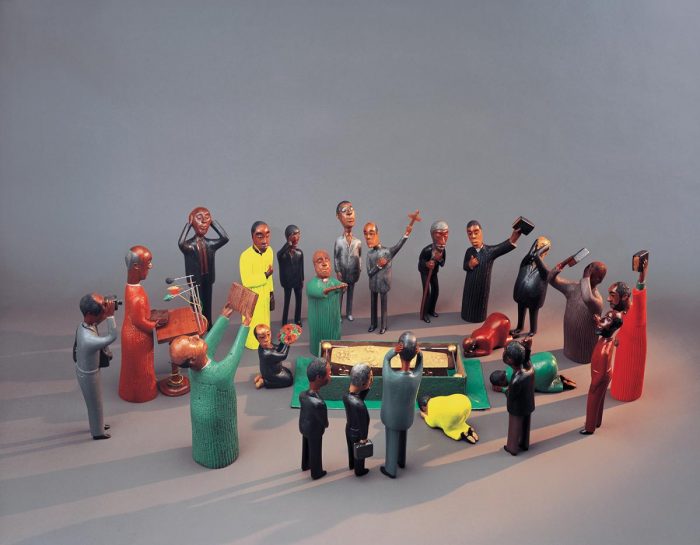 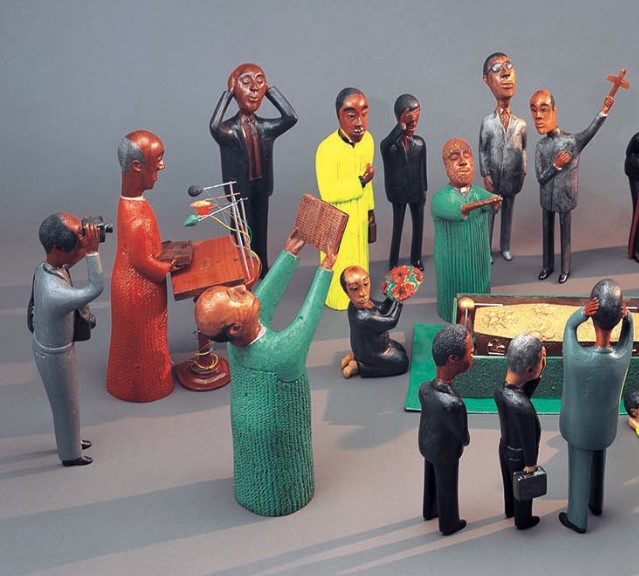 |
